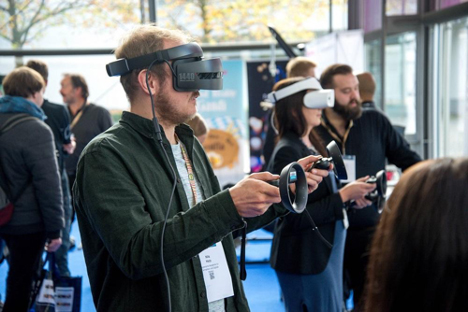A review of the technologies that help guarantee a positive customer experience.
Improving customer experience (CX) seems to be the hottest buzz word in the business world in the last several years. Unfortunately, as with most buzz words, it often lacks practical implication and most brands just pay lip service to the public, without actually doing anything about it. The only effects are boastful press releases and fanciful board speeches. Call centers are notorious for these, despite so many easy ways they can improve customer experience. The good news is that this behavior won’t be able to persist for much longer. More and more consumers are demanding a quality customer service that will take into account their needs and wishes and they are ready to pay for that. More importantly, they are prepared to punish companies that fail to deliver. Fortunately, we live in an age where technology can help brands in creating an effective system that will guarantee a positive customer experience.
The importance of customer experience can best be demonstrated through statistics. The expectations of modern consumers are increasing every year. Today, 54% of all customers have higher expectations for customer service than they did last year and this number will only go up in the future. In practical terms that means that even companies with excellent CX must constantly improve their customer service if they want to stay on the top because everyone else will be doing it as well. Furthermore, 45% of customers are willing to pay extra for a product just to ensure that they receive proper customer service when they need it. Interestingly enough, the speed of the response is a critical factor, valued even over effectiveness. 84% of consumers would recommend a company to their friends if they received a speedy response, even if it didn’t resolve the matter entirely.

Artificial intelligence has been present in our lives for many years, albeit in limited form. For most people, term AI evokes memories of Skynet and Terminators waging war on humanity, but we are still a long way from that being even a slight possibility. Artificial intelligence is mostly used in analytics and as such can play an invaluable role in creating a positive customer experience. It also allows the use of other technologies, like chatbots. The ability to analyze dozens of possibilities in nanoseconds and come up with an appropriate response to a customer’s query is what makes it so important and a cornerstone of customer services of the future. There are already several off-the-shelf solutions on the market today, but some companies are also developing their in-house versions, specially adapted to their needs.
While still not able to fully replace human operators, chatbots are well on the way of achieving that. For years now, they are an important part of the glossary of customer service. Almost all major companies employ them on their sites, to help with the oncoming traffic and help mitigate the need for thousands of employees that would otherwise be needed. Powered by AI, chatbots perform a valuable service and do it on the cheap. They can operate across a wide variety of platforms and be available 24/7, which is extremely important for global brands. They don’t get fatigued or lose their temper with annoying customers. Chatbots excel at repetitive tasks human workforce abhors and don’t feel frustration. The list of benefits they offer is a very long one, but they also have a number of deficiencies. The most important one is that they are no replacement for trained customer service agents and can’t cope with growing specialization the job requires.
Another hot buzzword in the IT world, virtual reality has been around for decades but has never really caught on. The reasons for this are numerous, but it would seem that in the 2020s we may finally have a massive implementation in many fields. Usually associated with gaming, it is already seeing use in many online virtual reality casinos, offering a unique experience to their customers. It also has the potential for implementation in improving customer experience. Properly employed, VR can offer a level of engagement previously unknown in online customer service. One of the largest brewers in the world, Guinness, has created a successful campaign using VR booths to launch their new range of products. It is only an example of what can be achieved by employing relatively new technology in a new and original way.

Internet of Things (IoT) has the potential to revolutionize many aspects of our lives, customer experience included. Just how effective and successful a connection between the real and digital world can be was demonstrated by Fitbit, a smart device designed to follow your fitness activities and monitor them. Of course, this is just one example. Smart dishwashers, heaters, and even cars are already on the market and soon almost every object in our households will have a direct link to the Internet. This opens up a lot of possibilities for creative designers, allowing them the freedom to create new applications that can take full advantage of IoT. Perhaps we will not even discuss customer experience in the future, since our car will be able to talk directly to the service shop and schedule an oil check or report a problem directly to the customer service, without the need for us to ever get involved.
In this episode, I sat down with Beejan Giga, Director | Partner and Caleb Emerson, Senior Results Manager at Carpedia International. We discussed the insights behind their recent Industry Today article, “Thinking Three Moves Ahead” and together we explored how manufacturers can plan more strategically, align with their suppliers, and build the operational discipline needed to support intentional, sustainable growth. It was a conversation packed with practical perspectives on navigating a fast-changing industry landscape.